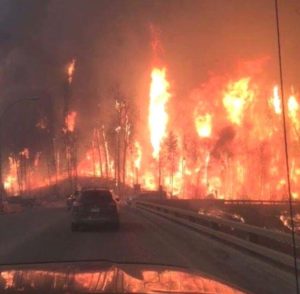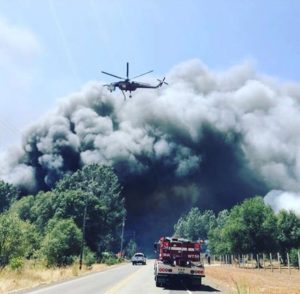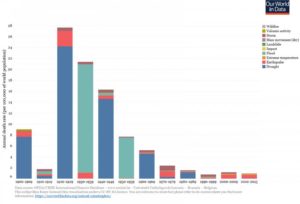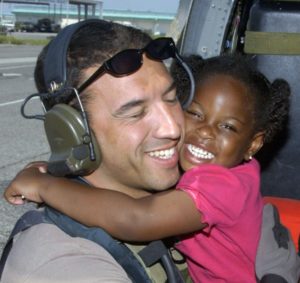NEPTA NEWS
5 THINGS TO KEEP IN MIND WHEN TALKING ABOUT DISASTERS
5 THINGS TO KEEP IN MIND WHEN TALKING ABOUT DISASTERS
If we had to reduce disasters to one word, it would be overwhelming. When a hurricane sweeps away entire houses, a flood seeps in through every corner of our life or a wildfire reduces to ashes an entire natural area, it can leave us speechless. But if we want to improve our reaction against disasters, we need to talk about them. At Scienseed, the I-REACT partner responsible for the project’s communication, we know that talking, writing and reporting about disasters is a sensible matter. Not only because it involves a lot of people in vulnerable situations. If we want communication to trigger a reaction against disasters, we have to keep some key factors in mind: the language we use to speak about disasters and hazards, the fact that they don’t affect everyone in the same way, the psychology behind understanding risks… And because we know checklists come in handy, we have elaborated a short list of 5 good practices to follow when talking about disasters.

#1: HAZARDS ARE NATURAL, DISASTERS ARE NOT
There’s no such thing as a natural disaster. There are extreme weather events, which are natural events that occur more or less frequently. They constitute a hazard, but they do not have to become disasters. We can prepare for them, putting preventive measures in place: using wetlands against floods, maintaining our forests to prevent wildfires, constructing resilient buildings against earthquakes… An extreme weather event turns into a disaster when it affects a community so bad, that it overcomes the preventive measures that were in place.
So if you are a journalist reporting about the effects of the last hurricane in a city, or about wildfires affecting a natural park, use extreme weather event or disaster, depending on the situation. Ditch “natural disaster” of your dictionary. We know it’s hard. We have grown used to the expression, but it’s time we change the way we see disasters. That begins by changing the way we talk about them.
#2 DIVERSE VOICES MATTER. LET THEM BE HEARD
Did you know that women are more likely to die during a disaster than men? And that the difference is wider depending on the social status? Disasters do not discriminate when they strike, but in many countries women’s roles imply looking after and protecting the people that surround them. This lowers their chances of surviving a disaster situation. For example, in rural Bangladesh women are expected to wear a sari, a traditional clothing that hinders running and swimming. Moreover, there is a social prejudice against women learning to swim. A social norm that becomes fatal in case of flooding.
Women are not the only social group that takes a heavy toll in a disaster situation. Children, people with disabilities, migrants… We rarely see stories that put these groups on their focus. Not only are their stories worth telling. Highlighting these stories raises awareness around the situation these collectives face, so we can take actions tailored to them and help those that are most affected by disasters.
#3 DON’T JUST REPORT ON FIGURES. PUT THEM IN CONTEXT.
The figures associated with a disaster are usually huge. The problem with big numbers is that we can easily get lost in them, without understanding their real meaning. A good strategy is to break the numbers down to a size that we are familiar with and relate them with more common contexts.
For example: just at the beginning of this year, the Thomas fire in California caused nearly $300 million in losses, destroyed more than 1000 buildings and burned more than 1100 square kilometers. Sure, these figures sound big. But how big are they really? If we say instead that the fire burned an area of the same size of the city of Rome and that the economical losses constitute nearly a 2% of the whole GPD of the Santa Barbara County. A 2% of the total market value of all final goods produced in the Santa Barbara County in a single year! In this way, we can grasp much better the magnitude of this fire.
#4 COVER DISASTERS BEFORE AND AFTER, NOT JUST WHEN THEY HAPPEN.
Usually disasters get the media attention when they happen. But once the disaster passes, media usually moves on to the next story, and the communities affected are left alone to heal. However, we can learn a lot from follow-up stories of a disaster. They can report good practices, so we can learn from past experiences to build more resilient societies. Like the lessons that Mexico has learned from past earthquakes, that is transforming the country into a more resilient, safer country. They can follow the international support, to see how the recovery efforts are being implemented. Or, if there has been no international effort, they can even raise awareness of the problem, triggering a chain of events that lead to external aid.

#5 POSITIVE STORIES MATTER. ESPECIALLY WHEN WE TALK ABOUT DISASTERS.
The grim figures in disasters news could make us think that disasters kill more people than before, but actually we are in a better situation than decades ago. Like the figure below shows, in the last 100 years, the number of victims in disasters has decreased drastically. These numbers show us that we are making progress when facing disasters.
Annual death rate due to disasters.
Source: Our world in data.
Also, research has shown that doom messages lead to inaction. So, if we want our words to turn into action, a positive focus in our stories can really make a difference.

When it comes to disasters, we are facing a communication challenge that can shape our future. In the years to come, climate change is going to increase the frequency and intensity of extreme weather events. We must convey this threat properly, in ways that leave us not overwhelmed, but ready to react and build more resilient societies against disasters.
ALWAYS REPORT POSITIVE NEWS WHEN DISCUSSING DISASTERS

This article is from our friends at IREACT
National Emergency Planning and Training Association (NEPTA) – 2018 All Rights Reserved
